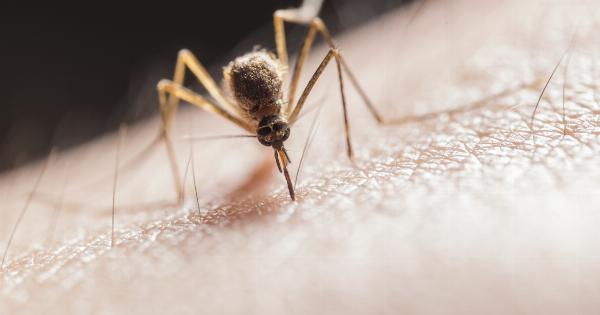Malaria is an illness that has been affecting people for centuries. It is transmitted through the bite of infected mosquitoes and is caused by the Plasmodium parasite.
There are several strains of this parasite, with Plasmodium falciparum being the most dangerous and responsible for most malaria deaths around the world. While there are preventive measures such as bed nets and insecticides, new research has been exploring an alternative approach to combating malaria by altering the genetic makeup of mosquitoes through sterility mutations.
What are Sterility Mutations?
Sterility mutations refer to changes in the genes of an organism that make it impossible for them to produce offspring.
This technology of genetically engineering mosquitoes has been in development for a few years now, with the primary goal of using it to combat malaria. This technique involves altering the mosquito’s genes to reduce or eliminate its ability to produce offspring.
Several strains of genetically modified mosquitoes have already been created, with each having its unique approach.
One of the most successful methods has been to introduce a gene that prevents the offspring from reaching maturity, leading to a reduced population of adult mosquitoes. Another method involves creating mosquitoes that are genetically male, which could help reduce the number of offspring and ultimately the overall population of mosquitoes.
Using Sterility Mutations to Combat Malaria
The mosquitoes responsible for transmitting malaria are usually female, and they require a blood meal to produce eggs.
By using sterility mutations, it is possible to reduce or eliminate their ability to lay eggs, hence reducing the number of mosquitoes available to transmit the disease.
Additionally, as mentioned earlier, the genetic engineering of mosquitoes can be used to create mosquitoes that are genetically male, which, when released into the wild, can mate with wild females, resulting in unviable offspring.
This approach could help reduce the overall number of mosquitoes, making it harder for malaria to spread.
What are the Benefits of this Approach?
The use of genetically modified mosquitoes has several advantages, with the most significant one being the potential for significantly reducing the number of malaria cases globally.
This technology also has the possibility of reducing the use of insecticides, which have been linked to environmental and health problems. Using this technique could ultimately lead to a significant reduction in the use of insecticides; hence, fewer people may be exposed to their harmful effects.
The use of genetically modified mosquitoes may also be cost-effective compared to traditional control measures such as using insecticides or distributing bed nets. Insecticides and bed nets require regular maintenance and replacement.
However, the investment in research and development of genetically modified mosquitoes would provide a long-term solution.
What are the Risks of this Approach?
Despite the potential benefits, using genetically modified mosquitoes to combat malaria comes with its own set of risks.
One of the significant concerns is the possible unintended consequences of introducing genetically modified mosquitoes into the environment.
For instance, the mosquitoes could evolve resistance to the genetic alteration introduced, leading to a resurgence of the mosquito population and a reversal of the gains made in reducing the number of malaria cases.
Additionally, genetically modified mosquitoes could interact with other insects in ways that are harmful to the ecosystem, leading to a range of unpredictable ecological changes.
The Success of the Sterility Mutation Approach
Despite the risks, the sterility mutation approach has shown remarkable success in several small-scale studies conducted in countries such as Brazil and the Cayman Islands.
In these studies, mosquito populations were significantly reduced, leading to a reduction in the number of malaria cases. However, these studies are still in their early stages, and it may take years before it is determined if this approach can be implemented on a larger scale.
Another success story is the recent approval of genetically engineered mosquitoes in Florida, USA, aiming to halt the spread of mosquito-borne diseases.
In May 2021, the US Environmental Protection Agency approved the release of genetically modified mosquitoes in the Florida Keys, marking the first time genetically modified mosquitoes have been allowed to be released into the US.
The genetically modified mosquitoes, named OX5034, were developed by a British-based company, Oxitec, and have been found to reduce the mosquito population by up to 90%.
The release of these mosquitoes is expected to help reduce the spread of diseases such as dengue, Zika, and chikungunya.
Conclusion
Malaria is a significant global health problem, and its eradication requires innovative and creative solutions. The use of genetically modified mosquitoes has the potential to significantly reduce the number of malaria cases globally.
However, before this technology can be implemented on a larger scale, more studies are necessary to ensure that environmental risks and other unintended consequences are adequately addressed.
While it may take years before this technology can have a meaningful impact on the fight against malaria, the recent approval of genetically engineered mosquitoes in Florida marks a significant step forward that provides hope for the future.


























